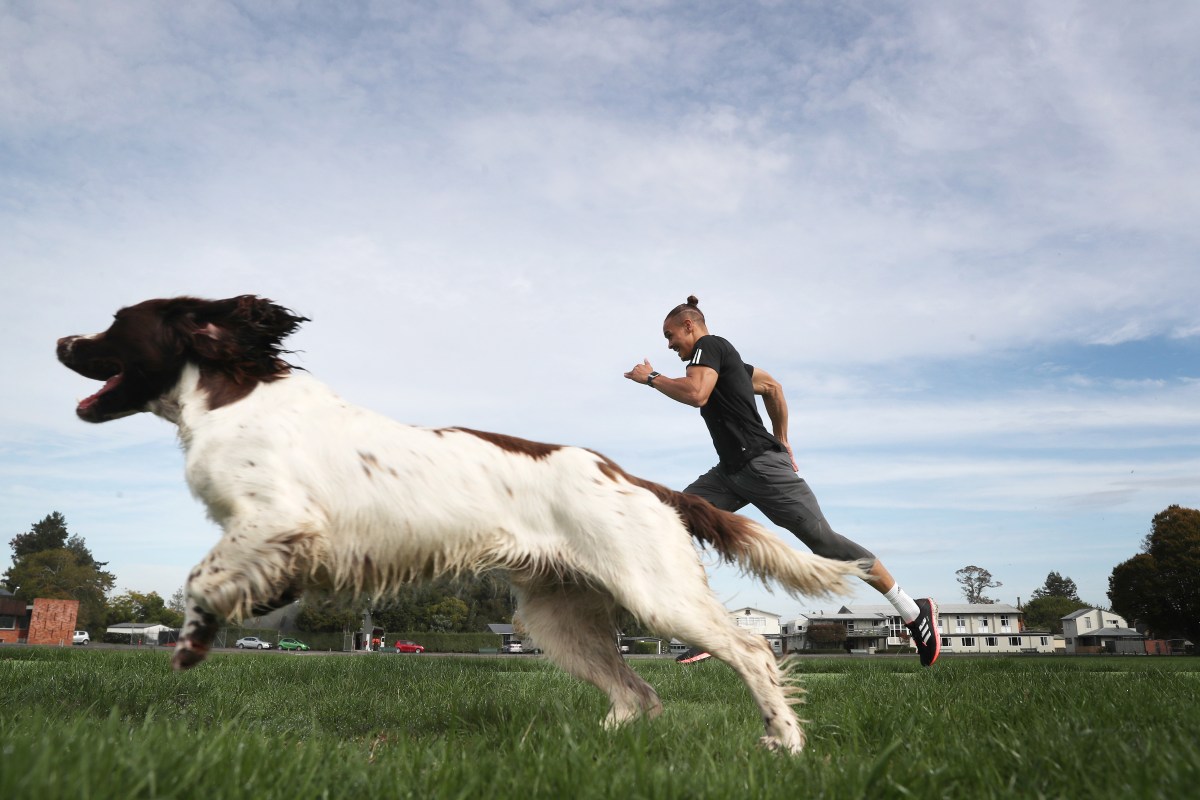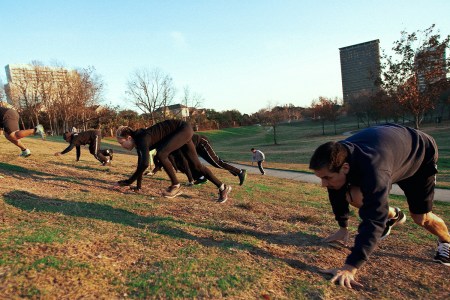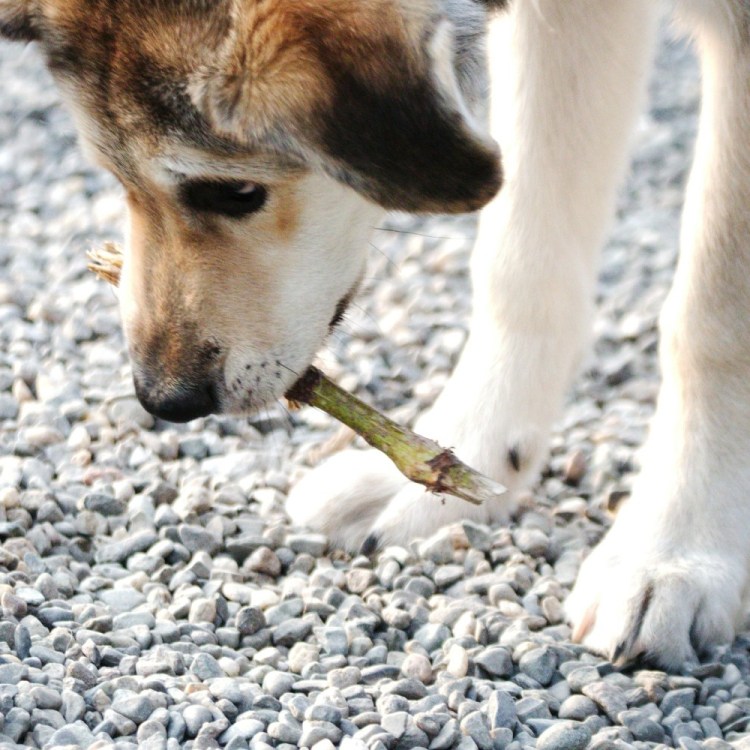Your dog likely already serves a number of purposes: unwavering companion, household security system, occasional vacuum cleaner for dropped food.
But how about personal trainer? After all, if your dog loves the outdoors — and never hesitates to sprint around the backyard in pursuit of trespassing squirrels or gophers — why not harness that energy and enthusiasm for your own physical benefit?
The idea’s got some legs. But programming any segment of your fitness routine around a dog takes careful planning. working out with your dog isn’t just about strapping on a leash and hitting the road. It requires understanding your dog’s abilities, taking into account safety measures, and respecting their comfort zone. Not every dog will be ready for a five-mile run or able to perform agility drills. Thus, it’s essential to create a realistic and flexible fitness plan that keeps your dog’s breed, age, and health in mind.
In this guide, we delve deeper into the world of pup-assisted fitness, offering wisdom on where to start, common mistakes to sidestep, and the many benefits you’ll reap when you turn your best furry friend into your fitness ally.
How to Perform the Ultimate Animal Kingdom Workout
Move like a frog, leopard or kangaroo with this 12-move guideFinding the Right Breed
Remember that the individual capabilities of dog breeds are highly stratified. Consider the Cavalier King Charles Spaniel — a perfect companion to newborns, but not a natural-born distance runner. It was literally bred to sit at the feet of aristocrats and attract fleas.
According to Bru Hill, owner of Top of the Hill Obedience and K9 Training in Graham, North Carolina, it can be cruel to demand physically fatiguing feats out of dogs that simply weren’t bred to exert themselves in such ways.
“If your goal is to get a dog to run with you, then you absolutely want to stay away from dogs with short-snouted noses; their nasal passages aren’t built to deal with strenuous exercise,” explained Hill. “I’ve seen some dogs that are in great shape that still have a problem with endurance because they have so much trouble breathing. You also don’t want to run with heavyset dogs like Mastiffs and St. Bernards. Even some pitbulls aren’t really made for exercise.”
Generally speaking, if you own a medium-to-large-sized dog, like a Weimaraner, English Springer Spaniel, Doberman Pinscher or American Foxhound, you’ve got a dog with legs and an airway that are likely up to the challenge. In fact, all of these breeds are on the American Kennel Club’s list of dogs that make the best running companions.
Know Thy Pet
Your dog may be naturally faster, quicker, and more agile than you, but durability is another matter entirely. Your dog needs time to develop its aerobic ceiling and cardiovascular capacity the same way any human athlete would need to do. Even if your dog is naturally built to sprint, it may not be able to sustain itself over the course of a non-stop, multi-mile session if it hasn’t been prepared for the task.
“If a dog enjoys running, it will probably push its owner to run even faster than they’re prepared to go,” explained Hill. “But if you have a lazy or out-of-shape dog, you’ll get the opposite type of reaction, and it will usually tell you it’s tired right away. Unless that dog has a natural drive to run even when it’s out of shape, it will let you know that it’s not interested in continuing to run.”
If your dog is more like a shooting star that bursts to life and then fades rapidly, and needs time to develop, the AKC advises that you begin with walking to get your dog warmed up, intersperse your training distance with some running segments, and then gradually increase the lengths of those segments over time.
You’d essentially be engaging in a form of Fartlek-style training with your dog. (A Swedish concept that entails altering the speeds of different segments of your workout, albeit not necessarily at predictable intervals.) This can include paces from comfortable walking all the way up to all-out sprinting.
By employing this sort of protocol, you and your dog can both enjoy 15 minutes of movement at several different speeds, as opposed to uninterrupted hours of walking or jogging. In addition, these shorter, playful engagements will probably be far more enjoyable to your dog than an unbroken, steady-state run.
Attention Span is Everything
Keep in mind that your dog’s listening skills will be severely challenged out on the open road. As soon as you snap a leash onto your dog’s collar and set out for a run, your dog’s limited attention span could send you careening into a busy street awry, or bring your workout to a screeching halt — all in the name of an evidently endlessly fascinating telephone pole. Also, the stronger your untrained dog is, the more likely this sort of scene is to unfold.
“We always tell people that are being dragged around on a leash that they need to get their dog under control,” said Hill. “If your dog has power that you can’t control, you don’t want to run with those dogs at all if they’re not trained to run alongside you. It’s bad enough trying to walk with a dog you can’t handle, but running takes obedience and patience. You’re inviting the dog to do what it really wants to do, which is cut loose and run, but you also want it to just run without stopping to interact with other dogs and other people. That takes an extra level of training.”
If this becomes an issue, your best bet is to to submit your dog to some form of obedience training. That way, you’ll reduce the likelihood of sudden starts, stops, twists and turns.
Use “Elephant Balls” to Turbocharge Your Grip Strength
It’s not as gross as it sounds. Trust us.As for Non-Running Activities
Most of your “dog workouts” will involve some sort of walking, running or hiking. But you might also be tempted to bring them along for aquatic activities in order to diversify the training regimen. In this realm, precautions are more important than ever — and you need to be very mindful of the breed you’re inviting into the water.
“Brachycephalic breeds, such as pugs or bulldogs, may not be well-suited for swimming,” cautioned Gaby Rise, a trainer at the Paws to Swim canine swimming facility in Rockville, Virginia. “For those breeds, it’s important to closely monitor them to ensure they can keep their cute, smooshed faces out of the water and safely breathe. Other breeds, such as water retrievers, may have an easier time swimming due to their structure.”
What does an aquatic workout with a dog even look like? Usually not lap-swimming sessions with few breaks. There are several flotation devices engineered specifically for dogs to extend their in-water play time, but retrieving is usually the name of the game, not swimming.
“At our facility, the vast majority of dogs are nicely tired after a 30-minute swim appointment, and some even fizzle out before then,” said Rise. “It’s important to note that this is not 30 minutes of continuous swimming, but rather water retrieving with a lot of in-and-out, and breaks. If you’re swimming in a natural body of water where the bottom is not visible, they could get caught on debris or they could chase wildlife and become fatigued before you realize what is happening. The same goes for bodies of water with a current. Many dogs don’t know their limits or have been bred to go, go, go. It is up to us to monitor, check for signs of fatigue, and end water play when appropriate.”
Remember Your Dog’s Needs
Make sure you provide your dog with ample sustenance before, during, and after whatever exercise you end up completing outside. This includes water offered before, during and after your workout session, along with training treats to be consumed along the way, and food provided upon your return home just in case your dog is famished from its efforts.
“You’ll clearly see if your dog needs water,” said Hill. “It will go from a normal panting to a raspy panting, and then if you watch closely, you’ll see the dog’s tongue pulsate every time it breathes. That’s when you know the dog is overheated and definitely being overworked.”
Mind the elements, too. Your dog is enduring the same weather you are, to one extent or another. Purchasing some form of clothing to protect your dog from wet or cold weather is always a good idea. (And if you live in a snowy climate, keep in mind that ice melt salt can do a number on their paws.)
Remember, your dog is the rare emotional being that adores you in spite of your many personal failings. That endless wellspring of undeserved love is one of the foremost advantages to owning a dog in the first place. Above all else, keep in mind that you’re the only one who knows that your session at a high school track is a scheduled workout. To your dog, it just registers as enjoyable bonding time — an adventure with the person it loves the most. Stretching your own fitness boundaries is an admirable intention, but take caution not to do it at the expense of your best friend’s trust.
The Charge will help you move better, think clearer and stay in the game longer. Subscribe to our wellness newsletter today.

























